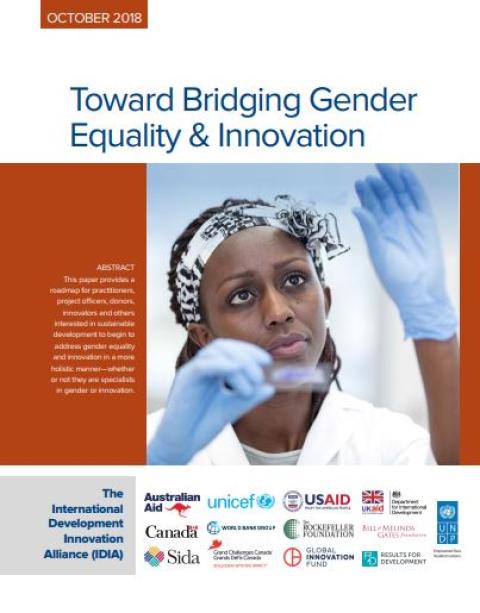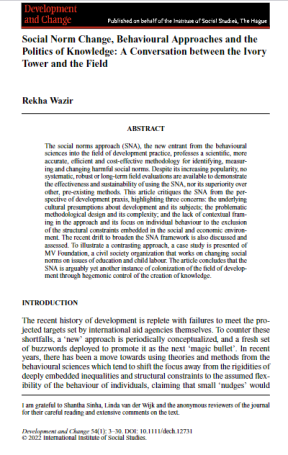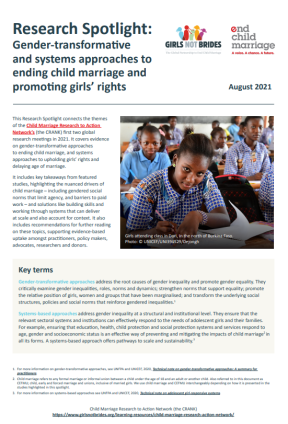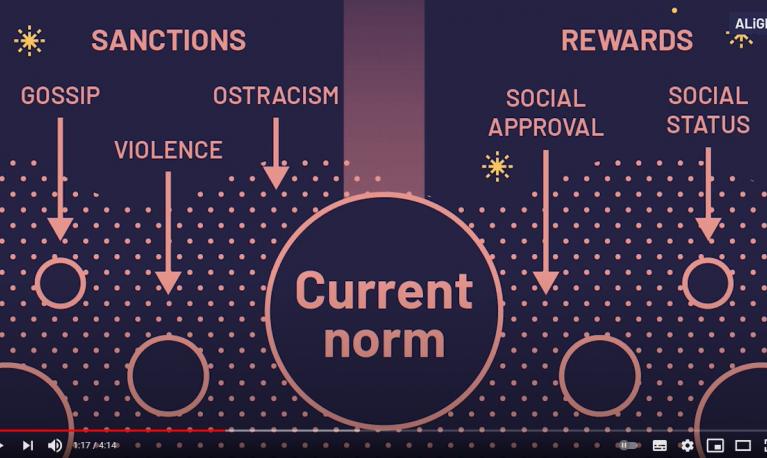- Report
- 1 Octubre 2018
Toward bridging gender equality and innovation
- Author: ESubden
- Published by: International Development Innovation Alliance

This paper in the IDIA Insights series focuses on the various approaches, lessons learned, and practices gleaned from gender and innovation specialists to more holistically address gender equality and innovation. It addresses an area where limited resources currently exist, namely the nexus of gender equality and innovation. It builds on the premise that gender equality and innovation are both critical drivers to achieving the United Nations Sustainable Development Goals (SDGs).
It defines “gender equality as what is achieved when women and men, girls and boys and people of all genders have equal rights, life prospects and opportunities, and the power to shape their own lives and contribute to society.” The assertion of this guide is that gender equality and innovation are cross-cutting and indispensable approaches to addressing challenges across the development spectrum. They are also complementary, insofar as a range of gender-related obstacles, such as discriminatory norms, power hierarchies, unconscious biases and other institutional structures and social arrangements may limit the utilisation or scaling of innovations. In this way, this resource encourages active gender-responsive approaches — as compared to those that simply “do no harm” or are gender-sensitive — in order to better engage women and girls as change agents in innovation processes.
It is organised as follows:
Part 1 outlines Principles for applying a gendered lens to innovation, building upon the IDIA Innovation Principles.
Part 2 describes what it means to integrate gender equality and innovation, drawing from IDIA members’ experiences and approaches. It identifies gender-related barriers, or those related to design or innovation management processes that may limit the utilisation or scaling of innovations.
Part 3 presents a framework or “tool” with questions to trigger thought and action to support scaling innovations that advance gender equality. It outlines “what success may look like” at each stage of the scaling process, with a selection of resources included in the Appendix for further guidance.”
Journal article
24 Agosto 2022

Briefing paper
1 Agosto 2021

Video/podcast
5 Julio 2021
